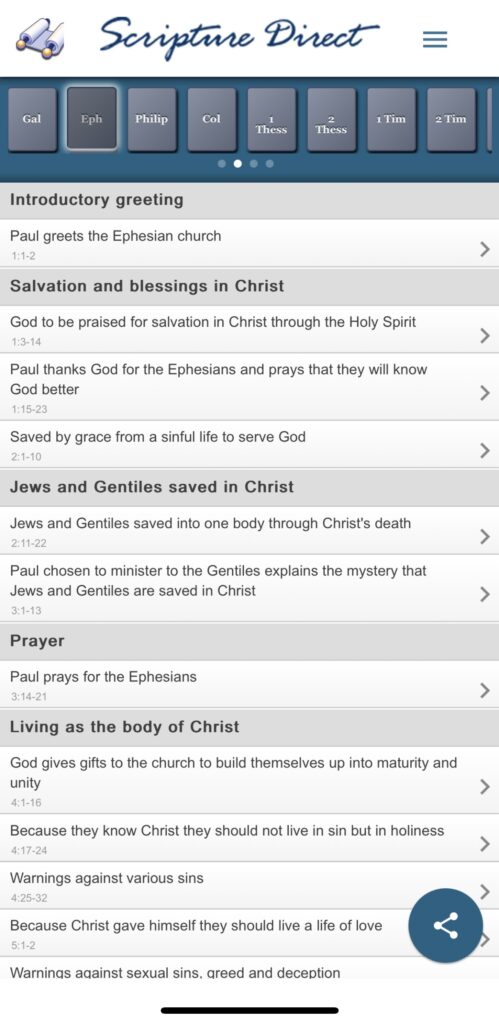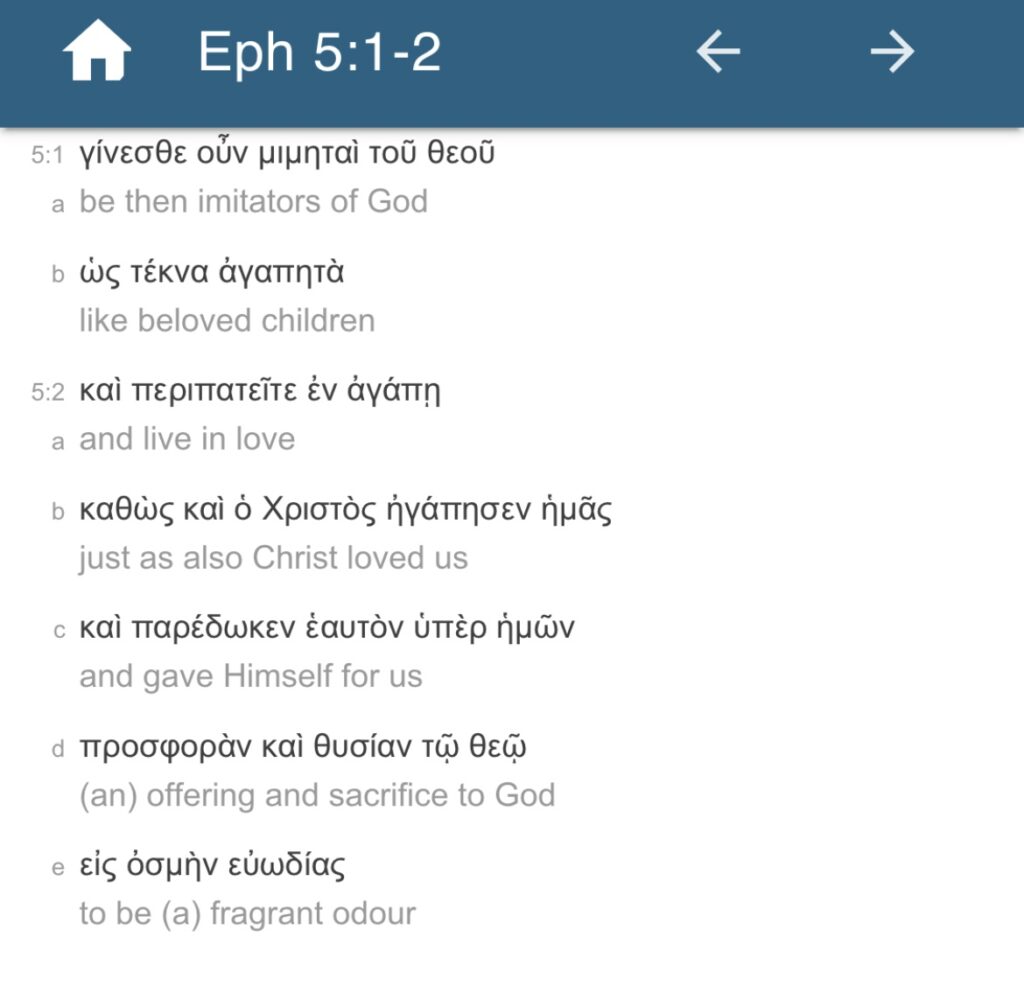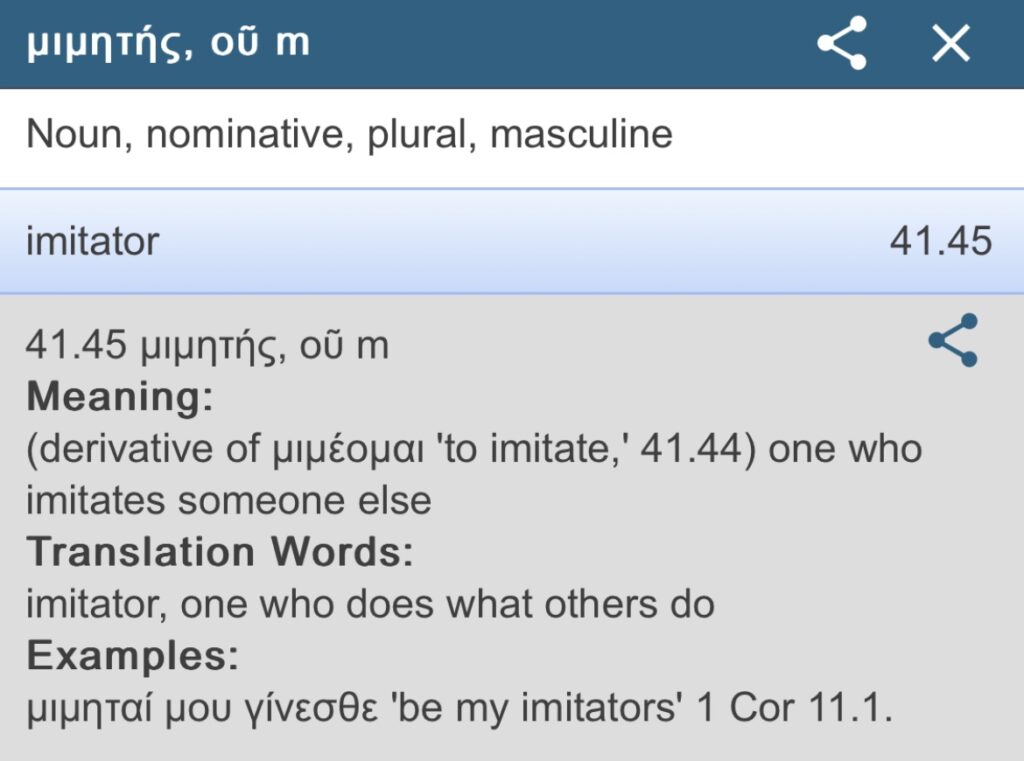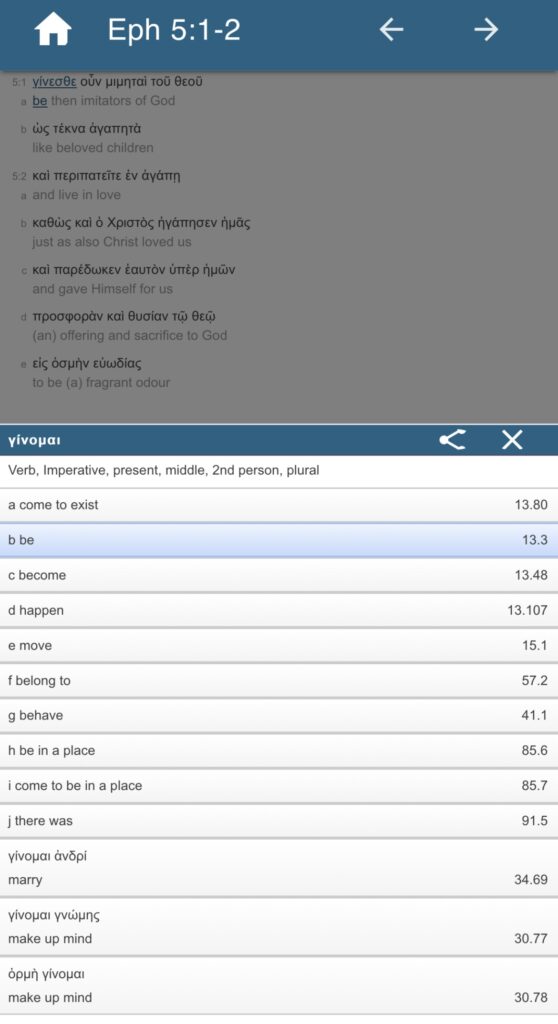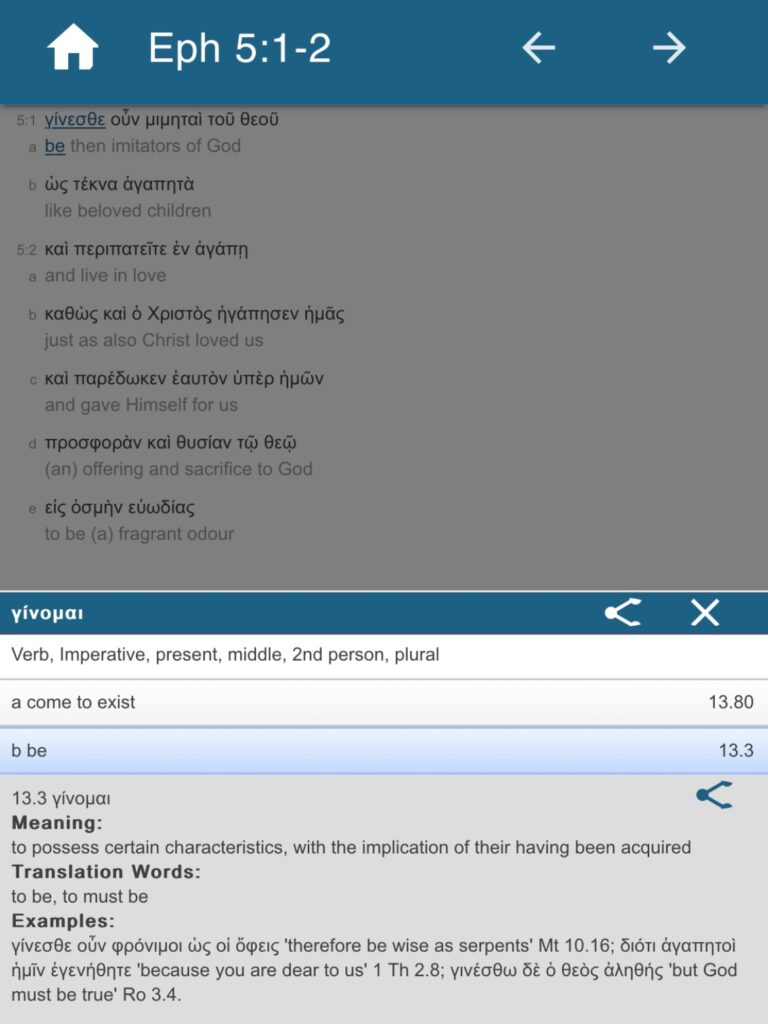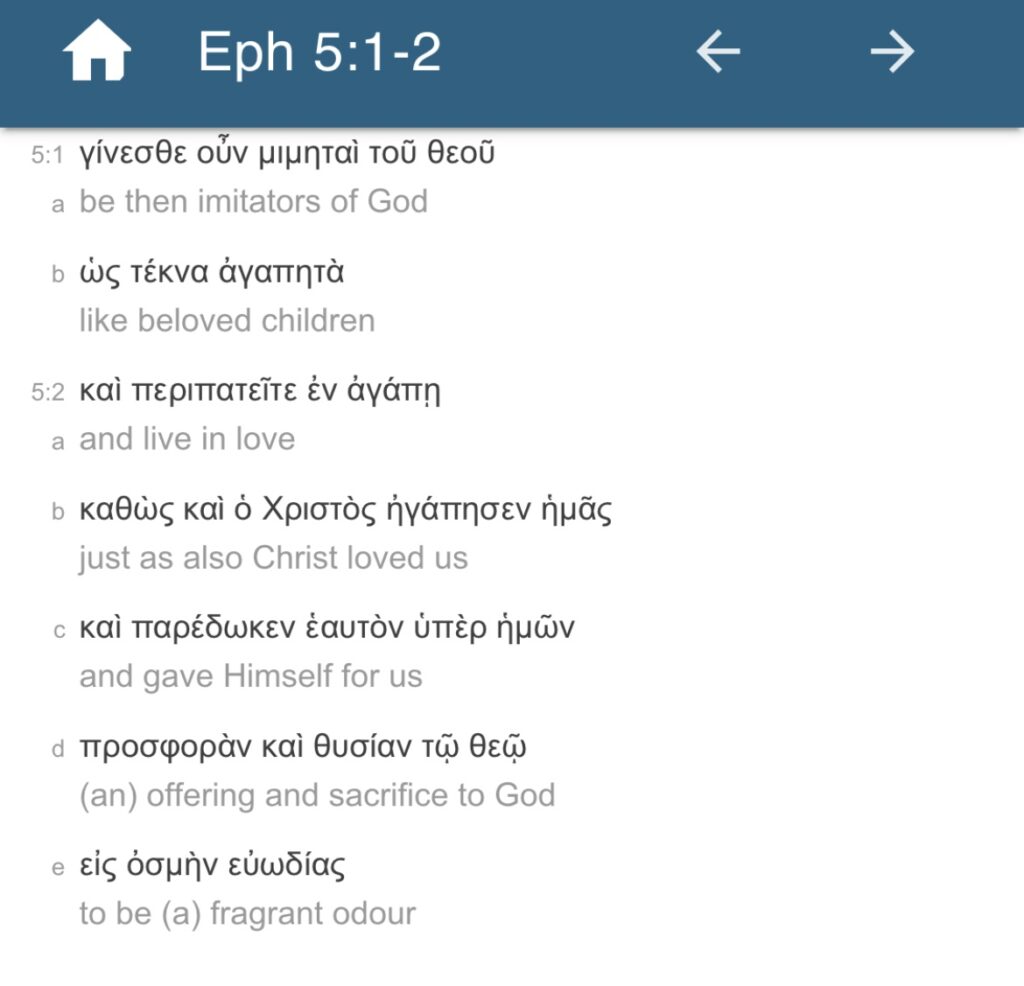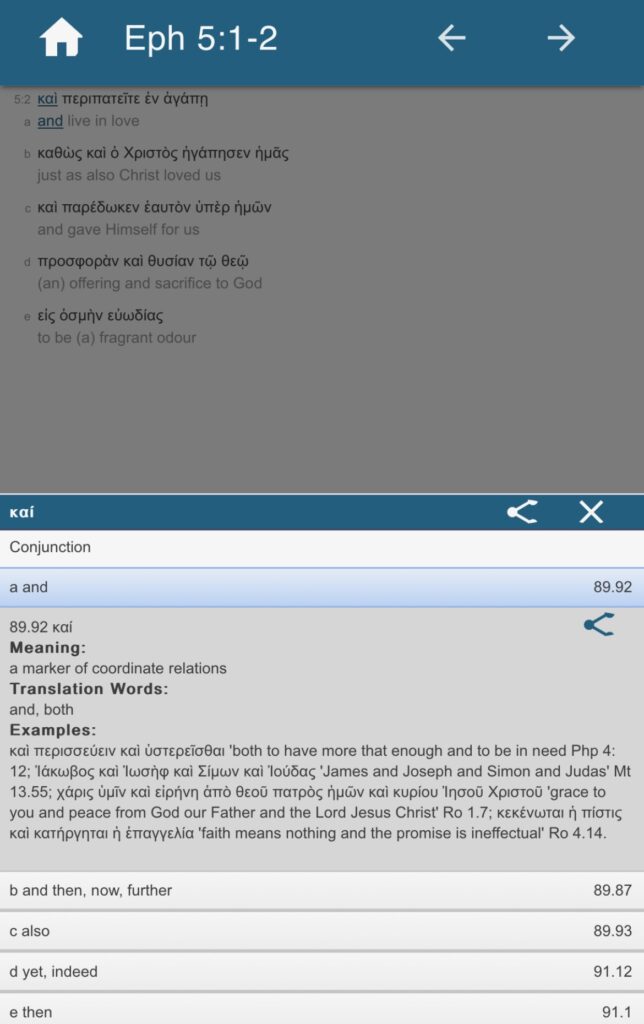This is an overview of another Koine Accessible Insights (KAI) tool: the Interlinear Greek New Testament, the King James Version (KJV, aka AV) available in the Kindle app format for the Apple iOS, and perhaps other systems. For convenience, I will refer to it here as the KIKJV (Kindle Interlinear KJV).
Source of KIKJV App
The source of KIKJV app is identified only by: publishingToronto@gmail.com. The publisher is apparently located in Toronto CAN. The app publishing date is December 2016.
Format of KIKJV App
The app is extremely simple: it has the KJV version as shown below using the same text from Ephesians 5:1-2 discussed in other posts.
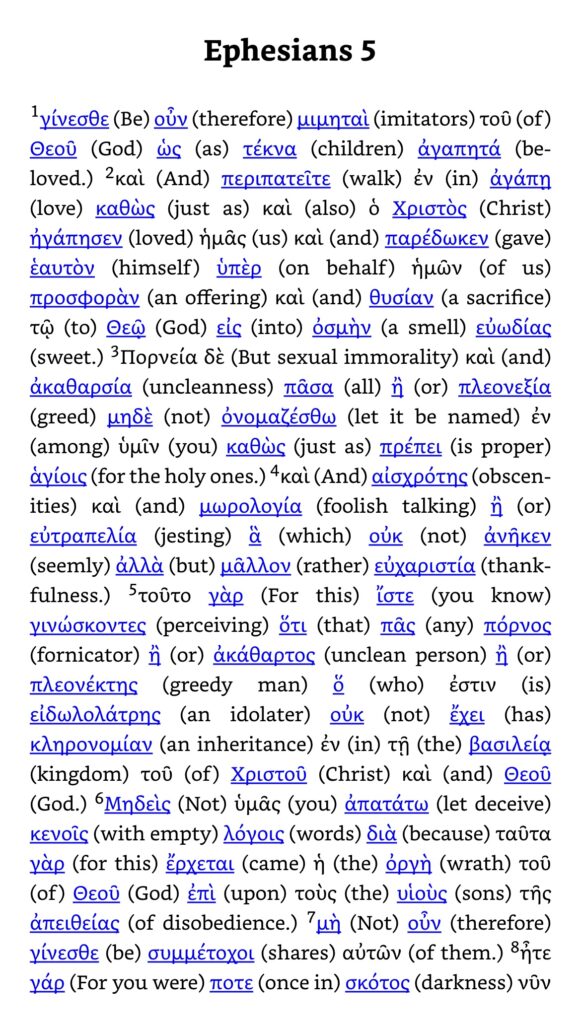
As evident, the underlying Koine text is the mss format, not a reverse interlinear (a reverse interlinear re-expresses the original mss to follow the English translation to be which it is affixed). So this gives the original mss word order, allowing a better understanding of potential emphases present in the Koine, such as here with the opening word being the verb of being: “to be.”
Koine Source Text
The edition of the Koine text is not identified. I would presume that the Koine used is the so called “Received Text.” However, it is not specified which such text it is. See a summary of the various such versions below:
The Greek Received Text was the basis for all of the Protestant and Baptist Bibles until the late 19th century, and there are several slightly varying editions. Erasmus published five editions (1516, 1519, 1522, 1527, 1535). Robert Stephanus published four (1546, 1549, 1550, 1551). Theodore Beza published at least four independent editions (1556, 1582, 1688-89, 1598). The Elziver family printed two editions (1624, 1633).
Which Edition of the Received Text Should We Use?
In 1881 Frederick Scrivener, under contract to the Cambridge University Press, published the Greek text underlying the King James Bible. This edition of the Received Text has been republished many times, most recently by the Trinitarian Bible Society and by the Dean Burgon Society. It conforms to the KJV.
Updated February 11, 2016 (first published February 10, 1996; enlarged May 11, 2006)
David Cloud, Way of Life Literature, P.O. Box 610368, Port Huron, MI 48061
866-295-4143, fbns@wayoflife.org
[Note: I am not endorsing the source-organization of the above citation; I believe David Cloud has given an accurate, or reasonably accurate for our purposes, summary of the multiple editions of the Koine text commonly referred to as “The Received Text” aka “Textus Receipts” that distinguishes it from another widely used apparatus known as “The Critical Text” which underlies many modern translations. The differences between the various editions of “The Received Text” and between any of which and, together, with “The Critical Text” is a subject of intense opinions. Our purposes here on this site is the tools and use of whatever Koine text the reader believes to be most accurate. In the vast, vast, majority of passages, the differences are small and inconsequential, though fierce, sometimes revilingly fierce, opinions are voiced to the contrary.]
Gloss Source Text
In parentheses adjoining each Koine word is a gloss English word (or phrase). The source of the each respective gloss appears to be the KJV, though which vintage of KJV is not identified. Again, as discussed in the citation above, there have been multiple versions of the Authorized Version (AV), aka KJV.
Underlying Strong’s Numbers and Word Helps
Each word given in blue font, and underlined, is a hot link to an underlying text within the app that gives the Strong’s number, and a very brief description of the Koine word form and a slightly expanded definition. An example for the Koine word translated “imitators” is given below:
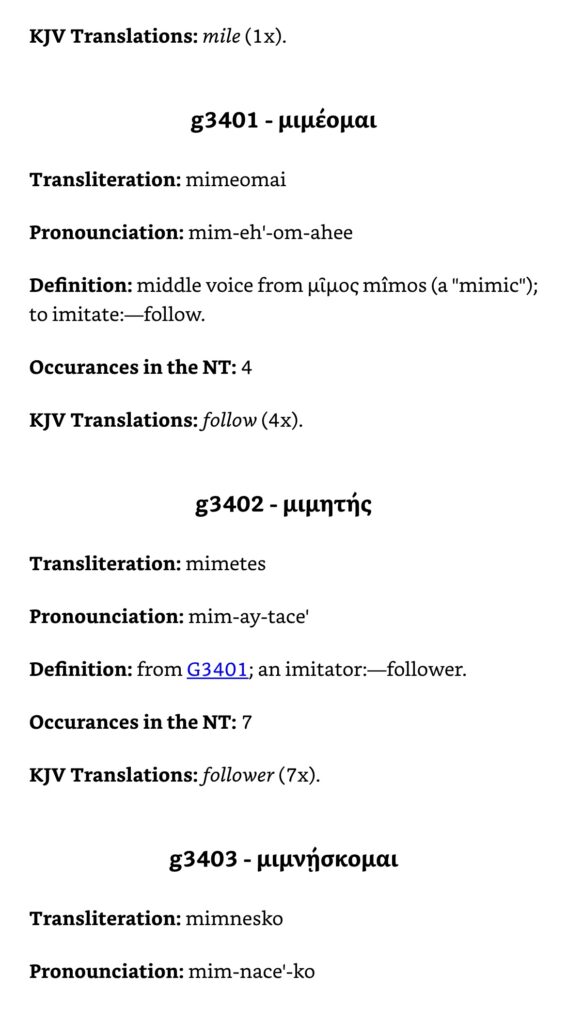
The above gives almost no information about the respective Koine word. For G3401, it can be discerned that it is the verb form–from the reference to “middle voice” (“voice” is only relevant to verbs) and the shown KJV translation “follow” which is a recognizable verb.
The Koine word directly below, G3402, is from the same root, and is an adjective, but both observations are on the reader to discern.
As shown, the Strong’s information identifies the number of NT occurrences, but it does not give their citations. These can be easily found, as discussed elsewhere, by doing a web search for “Strongs G3401” or even just…strongs g3401…or even…g3401.
Finding kai
As one of our purposes, KAIStudies, is finding the Koine word “kai,” this KIKJV app is very simple and useful. Looking at the first screenshot pasted above, one can readily find all the occurrences of “kai:” including the four in Eph 5:2 (as discussed in a separate post).
Note that no hot link to the Strong’s number for kai is provided, nor any supporting information. As shown in the adjoining parenthesis for Eph 5:2, kai is translation both by “and” and “also,” again as discussed elsewhere.
Throughout KAIStudies, I contend that at each “kai” occurrence one is well served to pause and consider how “kai” as the important ‘hinge’ connector can deepen the understanding of the text, just as the KJV translators did by using “also” where it did and “and” in the ‘default’ examples. A starting point for thinking, as proposed on this website, it to consider kai to be potentially an ‘arrow’ from what precedes to to what follows. However, kai as an arrow does not customarily convey the strong idea of cause/effect, but a more subtle “this unto that,” where “unto” might be the best default translation.
So, for example, kai as the first word of Eph 5:2 does more than just ‘add” the command verb “walk” with “in love” as a mere appendage to the text of Eph 5:1. Rather, there is something much deeper being conveyed, namely: that as “children” who are “beloved” (Eph 5:1) it follows in more than just some random next thought to “walk in love” (Eph 5:2). kai here is not being used to convey cause/effect, but to express the idea that from the significance of our being beloved children these should be an expectation that we “walk” and do so in a certain manner of being (“in love”). Accordingly, an effective ‘translation’ would be a right-ward facing arrow (were we bold enough to use symbols for meaning), or confined to an English word, “unto” is better than the generic “and” as shown above and in almost all English translations.
